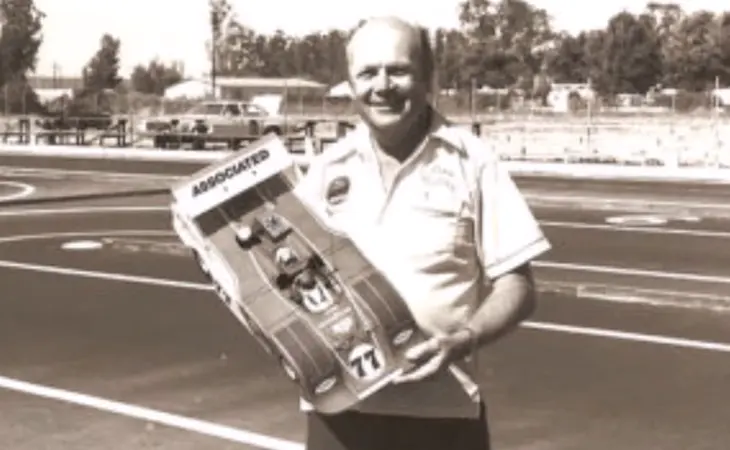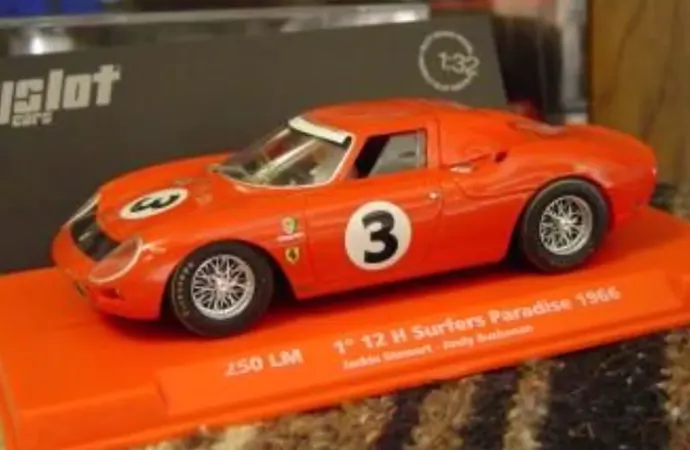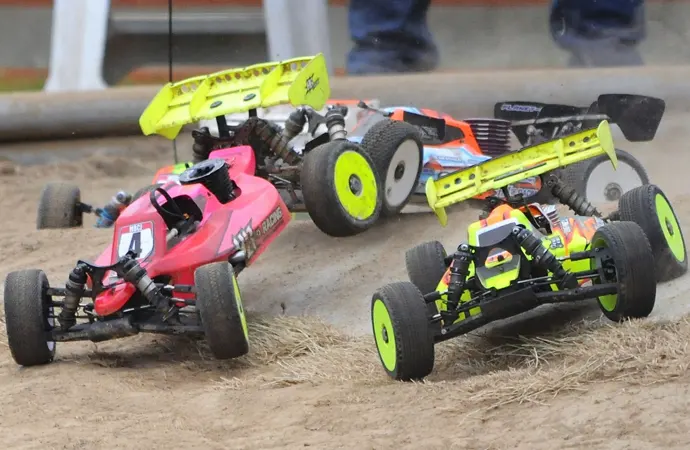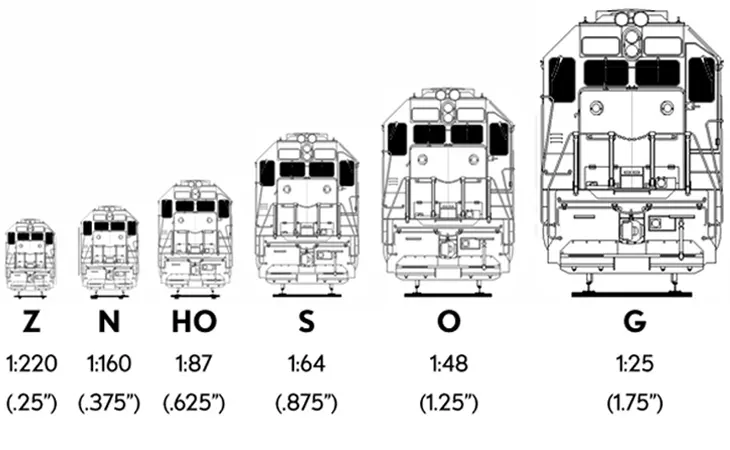The History Of RC Cars From 1966 Till The Present Days
Back in the days, remote-controlled cars were all the rage among the kids. All the cool ones had them, and some of the best afternoons were enjoyed pitting them up in a race. Though those days are long gone, some of us still remember them, and many still collect them when we get a chance.
These contraptions would change your entire image in the school if you managed to get your hands on one. Many loved to collect them for how vividly they could replicate the look of an actual car.
If you are a fanatic of these fantastic toys, then this article is perfect for you. Let us journey through time together, as we go over the entire history of RC cars from the early ’60s to the present. We will look at what made them so famous and see them evolve right up to the current form available on the market.
History of RC Cars Begins: 1966 – 1969
The first remote-controlled car that we could trace back to was manufactured in 1966. An Italian electronics company, by the name of Elettronica Gioattoli, came up with a small model of Ferrari 250LM powering it using a Nitro engine. It marked the beginning of a real remote-controlled design implemented in a toy car.
Only a year later, Mardave, a British company, started mass-producing similar units making it available to the people. Other companies also wanted to get in on the action and started producing car kits, which became known as “pen cars.” All these units were one-eighth of their original counterparts and employed the engine of a two-stroke model airplane.
But the Italian company did not sit idly while everyone started competing for the top spot. Their use of nitro and gas-powered cars were innovative for the time. In 1968, they revealed another excellent remote-controlled car at the Milan Toy Fair, but this one was modeled after the Ferrari P4.
The Early Days: 1970 – 1979
The seventies were a wonderful time for remote-controlled cars. It was a time of innovation, and many manufacturers tried to push the boundary constantly to beat the market. Although it was already four years since the first model came out, this was the time that placed this type of toys on the map.
The Era of the Nitro Engine
Before the ‘70s, engines in these units mostly contained a single-piston. Manufacturers started switching to double-piston engines to get a better performance out of the cars. The engine made by K&B Veco McCoy stood out as the best one out there with its strong aluminum chassis and high-performance structure.
For this reason, most companies opted to go with this engine for their products. The oil used in these nitro cars were a blend of methanol, lubricant, and nitrogen, hence the name nitro. In 1971, a company known as Team Associated came out with its first unit called RC1, a 1/8 scale on-road car powered by this very nitro engine. They later came out with another model and called it RC100.
The Advent of the Electric Engines
The first major milestone for RC cars was the arrival of electric engines. This innovation catapulted the popularity of these toys widely. The Japanese company, Tamiya, first produced remote-controlled electric units based on the Porsche 934 in 1976. It was a 1/12 scale model that came with a pan chassis housing an electric engine.
The idea was quickly picked up by other manufacturers, and we saw different electric models such as Tyrrell P34, Toyota Celica, Ferrari 312T, and many others. Team Associated also pitched in and came up with their own electric pan car, RC12E, the E stands for electric.
Off-Road Remote-Controlled Cars
Until this point, the greatest limitation of these units was that they needed a smooth road to work. Off-road was not really an option for RC units, that is until Tamiya decided to do something about it. The same company that introduced electric-powered RC cars to the world also gave us the first Off-Road unit in 1979.
Featuring real suspension system, a powerful motor, and heavy-duty rubber tires, these off-road units could traverse any terrain. They came with a dune buggy styled body and were powerful units, that piqued the interest of many people. Tamiya came out with two models of off-road vehicles called the Rough Rider and Sand Scorcher. You need to spend thousands of dollars today to get your hands on these units.
Thanks to the road paved by these two models, off-road electric cars became the new staple to the industry. Within a few years, many more similar products hit the market. A few units that are worth mentioning are Tamiya Frog, Grasshopper, The Hornet, Clod Buster, and Blackfoot.
Another event that led RC cars to infamy was the Geneva On-Road Gas Championship held in the same year. The winner of the tournament was Phil Booth, who became a legend in this sport and regarded as one of the people who pushed this industry to the Golden Era.
The Golden Era: 1980 – 1989
By the early ‘80s, the popularity of RC cars spread like wildfire. The industry saw many innovations in this period. All the hype was further fueled thanks to the 1/12 scale World Championship held every two years. With the skyrocketing popularity of remote-controlled cars, manufacturers started creating high performance models rather than simply focusing on scale models.
Off-Road 4WD Buggy
Until now, the only innovative manufacturers of Off-Road Buggy were Tamiya producing high-quality models. But around the eighties, many American manufactures also stepped into the game coming up with their own renditions of the product. A few notable manufacturers were Associated Electronics, Losi, and Traxxas.
Associated Electronics even won an award for their RC10 which features aircraft-grade aluminum alloy construction and a high-performance transmission system that could adapt to any terrain, in 1984. This paved the way for American manufacturers to make a name for themselves later on.
However, in 1985, Tamiya came up with a 4WD unit that is capable of handling slippery or sandy terrains and also claimed to be faster than previous models. They called it Hotshot. Soon many more units took its place, and we could see cars that could reach up to 40mph maximum speed.
By 1988, the popularity of 4WD off-road remote-controlled cars gave rise to high-end manufacturers all over the world. Companies such as Kyosho, Yokomo, Schumacher Cat, Team Losi, etc. became well known for creating some of the best buggies that are still hard to beat.
Team Losi, in particular, became the biggest competitor of Team Associated, who, until now, were always the sole leaders in the industry. But Because of models such as Losi 2WD Electric Buggy and JRX-2, they could give Team Associated a run for their money. Innovations became the staple of this brand, bringing new designs with their cars.
High-performance Racing cars
Another notable achievement of the eighties was the emergence of racing cars of 1/10 scale. These lightweight units could zip around a circular or oval-shaped track with extreme speed, further catapulting the racing industry of remote-controlled vehicles. The innovations in the unit allowed for more high-speed races around the globe.
The trademark moment of these types of cars was probably in 1989 when Team Associated built the RC10L pan car to rival their competitor, Losi. Kent Clausen made history with this car at Encino Velodrome event by reaching a whopping 57mph top speed. He later beat his own record by reaching 70mph with this very model.
The arrival of 4WD off-road buggies and fast racing cars is what is loved most about the eighties. It was the golden era for pan car thanks to the RC10L.
The Need for Speed: 1990-1999
Speed was the ultimate driving force in the nineties. Near the end of the previous era, Kent Clausen showed the world that RC cars are capable of being fast. This vision led the way for other manufacturers to step up and break the speed barrier by bringing new innovations to the market. There was even a new game invented called Superspeedway for Remote-controlled cars.
Championship events
Although a few tournaments had already started before, the nineties were the time when it got established as something truly unique and special. This was largely due to the breakthrough in the production of high-speed electric cars by manufacturers such as Team Associated and Losi.
Team Associated, in particular, came out with an innovative new design by adding a Dynamic Strut suspension system that later on became the new industry standard for high-speed racing RC cars. However, because of the high-quality parts, the price of the units also saw a considerable rise.
One championship event held in 1992, the IFMAR 1/19 Scale Electric On-Road World Championship, marked the real rise of remote-controlled cars. Team Associate attended the event with their RC12LS, RC10LS0, and RC10LS.
The industry went from solely monster truck battle events to high-speed truck competitions around 1993. Around a year later, three gas truck models were released by three different companies; the RC10GT by Team Associate, the TR15T by Tamiya, and the Super F1 by a new company called HPI.
Touring Cars
Touring cars are the fastest cars in the industry and had a massive fan-base due to its association with racing events. Two of the most popular models in this sector were TA01 and TA02, both from Tamiya. They featured an aerodynamic body and a realistic design. However, they were quite expensive.
The popularity of touring cars continued for a long time well into the year 2000. During this time, people were looking for smaller scales rather than the traditional 1/10 models. 1/12 scales became more popular, and we also got different 1/18 models in the market.
Around this time, manufacturers started producing mini and macro remote-controlled cars due to their high demand. Gas-powered units saw a massive rise in popularity and demand. In the late ‘90s, Traxxas came up with a new form of delivery of the product. They produced the first Ready to Run (RTR) unit, which did not require any assembly on your part.
The Current Scenario: 2000 – Present Day
The 2000s were a time of shift and acquisitions. We saw a drastic change in the industry compared to its early period. Different manufacturers got acquired by other companies and rebranded in other names. Team Losi became known as Team Losi Racing, and Team Associated got acquired by a Taiwan company called Thunder Tigers.
The first major shift was switching from radio-frequency to gigahertz, or, more specifically, 2.4 GHz frequency. The company Nomadic pioneered this change, and it was quickly picked up by another manufacturer called Spektrum.
Rock Crawlers
Around 2004, Rock Crawler models started to pick up steam in the industry. However, it did not truly see a massive increase in infamy until 2007 when Axial released its easy to build rock crawler kit. They called it the AX10, and it played a vital role in expanding the popularity of this type of vehicle.
Short Course Electric Trucks
Around 2008, Traxxas paved the way for short course electric trucks by introducing Slash, a 2WD electric powered RC truck. Many other manufacturers quickly picked up on it by bringing models that replicated the look and design of a real racing truck.
Hydrogen Fuel Cell
It is one of the most recent innovations in the industry. In 2010, hydrogen fuel cell hybrid, H-Cell 2.0, became the primary way to provide power in high-grade units. These models had up to four times of battery life compared to the previous versions.
Nowadays, we can find brushless electric motors, lithium-ion batteries, and many more advancements in the industry, giving us a better product than ever before.
FAQs About The RC Cars
Q. How does the future look for RC fans?
To be honest, the hype of RC cars has died off significantly compared to the sixties or seventies. But there are still a large number of people who are into it as a hobby.
The technology involved in these units have improved largely and will continue to improve as long as the followers are active.
Q. How many types of remote-controlled cars are currently out there?
Nowadays, you can find five different types of RC cars. They are touring cars, buggies, short course trucks, RC crawlers, and monster trucks.
Monster trucks might still be the most popular one out of all of them.
Q. What is the maximum speed ever achieved by a remote-controlled car?
The fastest recorded speed by an RC car is 352.12 km/h, which is around 202 miles per hour. Nic Case from the USA achieved this feat with his “Radio Controlled Bullet,” which is a battery-powered unit in Saint George, Utah, in 2014.
Q. What is the most popular brand for RC cars?
There are many brands that have gathered a good reputation in the industry of remote-controlled vehicles.
Brands such as Tamiya, Traxxas, and Team Associated, among others, come to mind when talking about the best brand out there.
Q. What does a hobby grade RC vehicle mean?
Hobby grade remote controlled cars are meant to be of a much higher quality than a toy grade unit. They feature better construction overall along with some advanced features.
For example, a hobby grade RC car will be faster and have better handling than a toy grade unit.
Final Thoughts
Remote-controlled cars are a fascinating piece of technology that shook up the world when it first came out. Granted, the hype has died out considerably since its conception, but the fanatics still hold their memories and collection close to their heart.
We hope you found our article on the History of RC cars informative. If you ever had a fascination with these fantastic devices, this article is sure to recall some incredible memories from your past.










